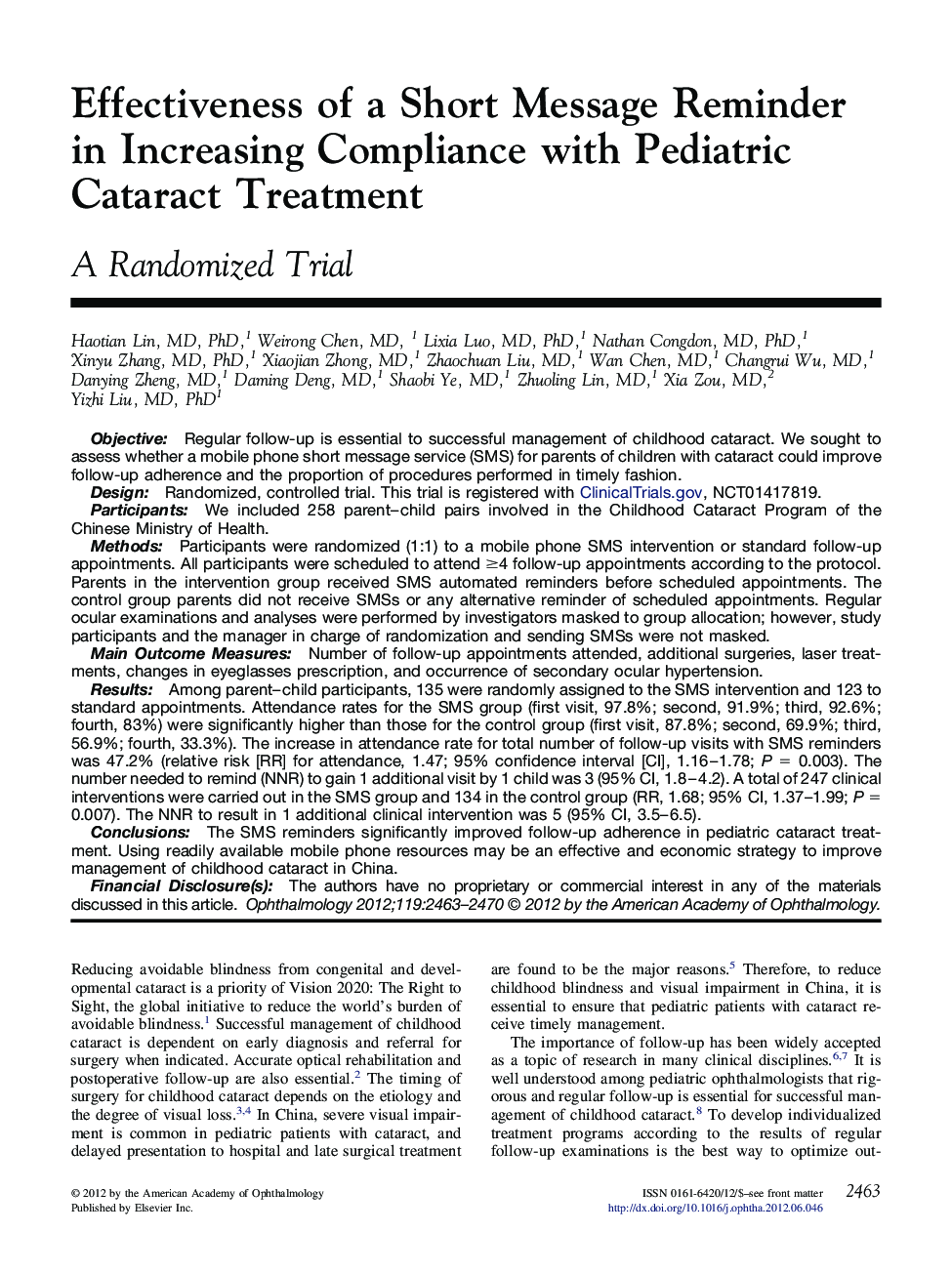| کد مقاله | کد نشریه | سال انتشار | مقاله انگلیسی | نسخه تمام متن |
|---|---|---|---|---|
| 4026996 | 1262447 | 2012 | 8 صفحه PDF | دانلود رایگان |

ObjectiveRegular follow-up is essential to successful management of childhood cataract. We sought to assess whether a mobile phone short message service (SMS) for parents of children with cataract could improve follow-up adherence and the proportion of procedures performed in timely fashion.DesignRandomized, controlled trial. This trial is registered with ClinicalTrials.gov, NCT01417819.ParticipantsWe included 258 parent–child pairs involved in the Childhood Cataract Program of the Chinese Ministry of Health.MethodsParticipants were randomized (1:1) to a mobile phone SMS intervention or standard follow-up appointments. All participants were scheduled to attend ≥4 follow-up appointments according to the protocol. Parents in the intervention group received SMS automated reminders before scheduled appointments. The control group parents did not receive SMSs or any alternative reminder of scheduled appointments. Regular ocular examinations and analyses were performed by investigators masked to group allocation; however, study participants and the manager in charge of randomization and sending SMSs were not masked.Main Outcome MeasuresNumber of follow-up appointments attended, additional surgeries, laser treatments, changes in eyeglasses prescription, and occurrence of secondary ocular hypertension.ResultsAmong parent–child participants, 135 were randomly assigned to the SMS intervention and 123 to standard appointments. Attendance rates for the SMS group (first visit, 97.8%; second, 91.9%; third, 92.6%; fourth, 83%) were significantly higher than those for the control group (first visit, 87.8%; second, 69.9%; third, 56.9%; fourth, 33.3%). The increase in attendance rate for total number of follow-up visits with SMS reminders was 47.2% (relative risk [RR] for attendance, 1.47; 95% confidence interval [CI], 1.16–1.78; P = 0.003). The number needed to remind (NNR) to gain 1 additional visit by 1 child was 3 (95% CI, 1.8–4.2). A total of 247 clinical interventions were carried out in the SMS group and 134 in the control group (RR, 1.68; 95% CI, 1.37–1.99; P = 0.007). The NNR to result in 1 additional clinical intervention was 5 (95% CI, 3.5–6.5).ConclusionsThe SMS reminders significantly improved follow-up adherence in pediatric cataract treatment. Using readily available mobile phone resources may be an effective and economic strategy to improve management of childhood cataract in China.Financial Disclosure(s)The authors have no proprietary or commercial interest in any of the materials discussed in this article.
Journal: Ophthalmology - Volume 119, Issue 12, December 2012, Pages 2463–2470